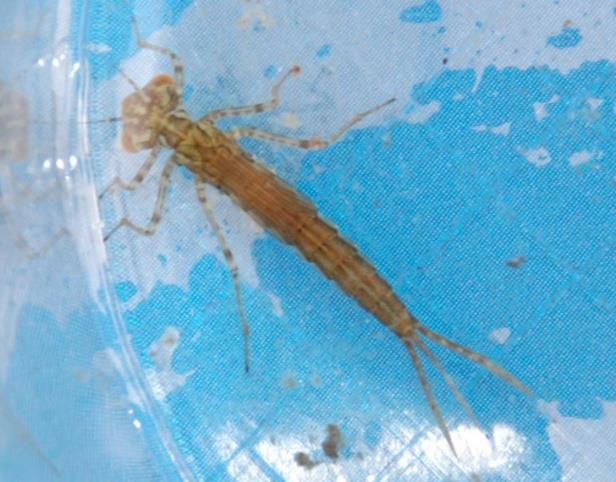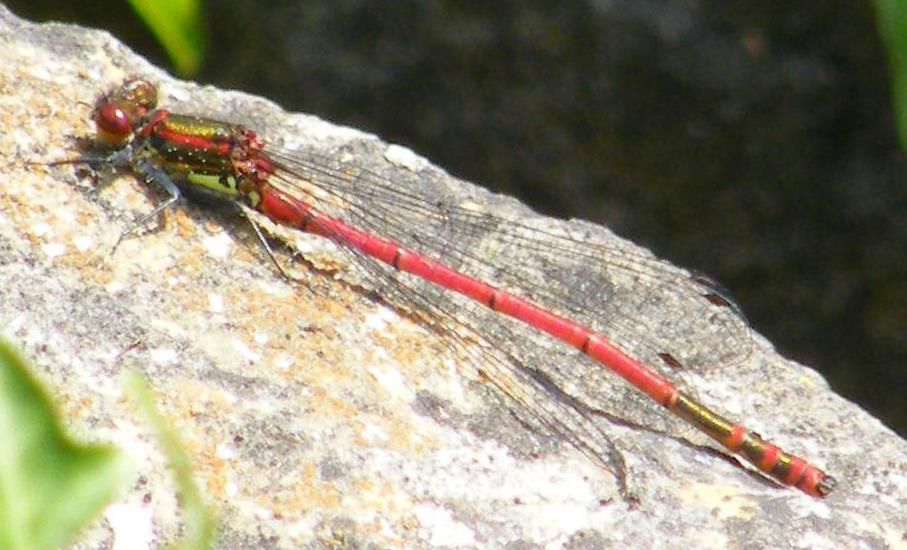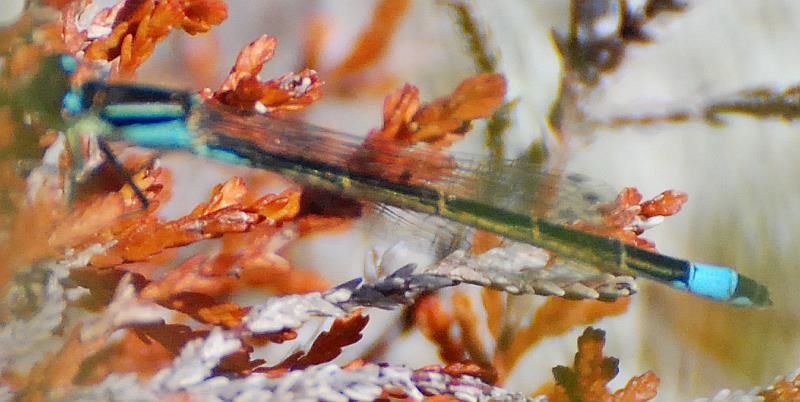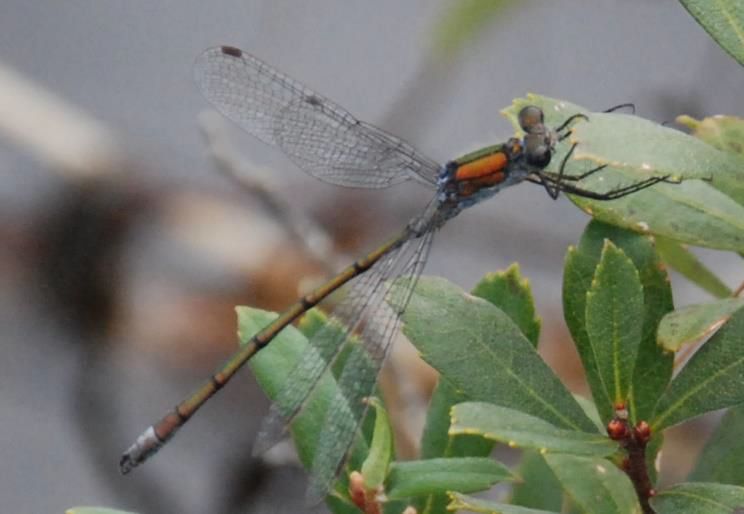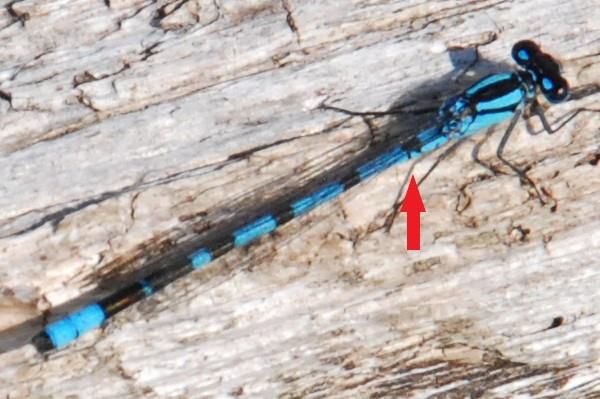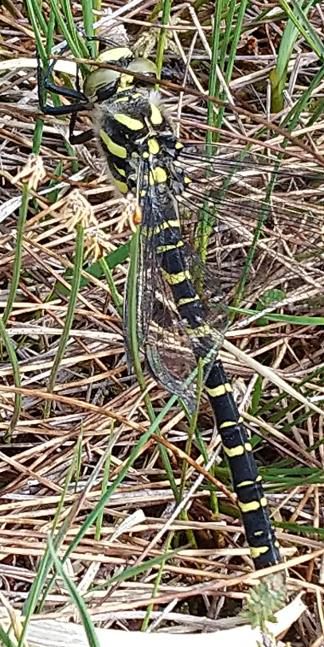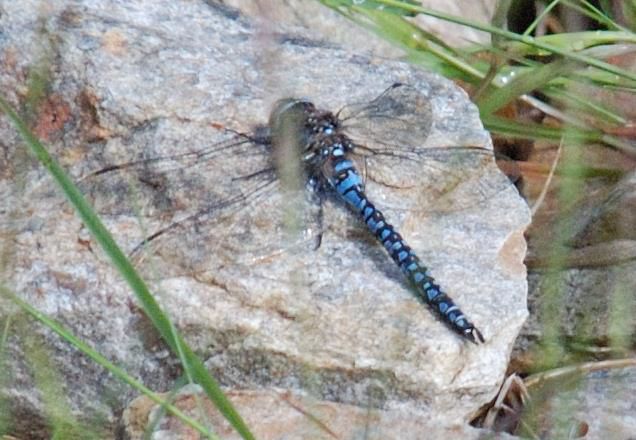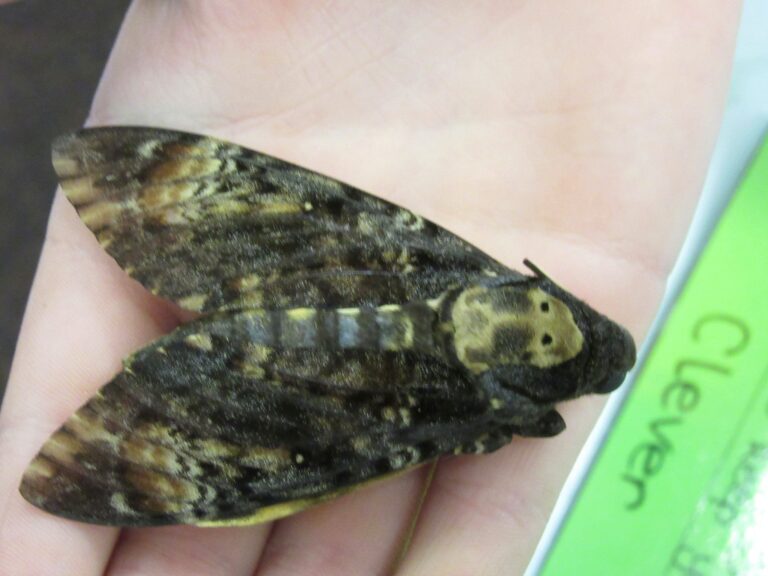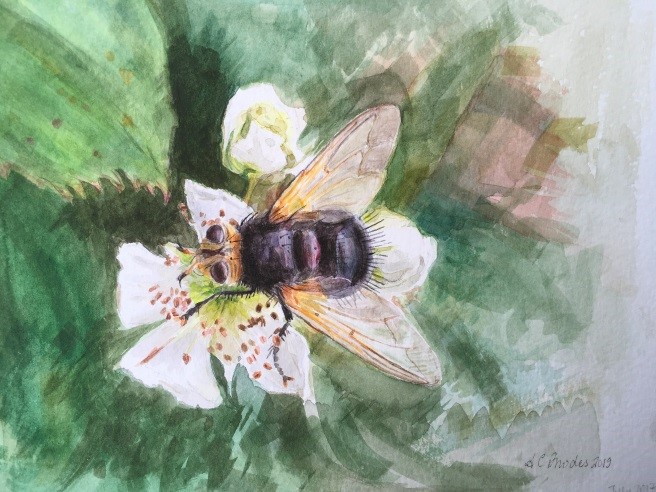A brief introduction to Dragonflies in the North Sutherland area
OK, so these pictures don’t depict the brightly-coloured insects that we normally think of as dragonflies. Firstly, they are damselflies and secondly they are nymphs. The term ‘dragonfly’ can cause confusion because it is applied both to the overall group comprising damselflies and dragonflies (Odonata) and also to the dragonfly (Anisoptera) part of that group. So damselflies (Zygoptera) are also dragonflies in the broader sense of the word.
Now, what about ‘nymphs’? Well, this is another term for the larvae, the wholly aquatic form that damselflies and dragonflies occupy for most of their lives. These are what you are likely to find when pond-dipping. Damselfly larvae have three ‘tails’, strictly speaking ‘caudal lamellae’, whereas dragonfly larvae lack them and are generally larger, as befits what will become a larger adult insect, though all will have started small when they hatched from the egg.
The damselfly on the left above is in its natural larval environment – water – where it will live a carnivorous life munching smaller prey and growing until is either eaten by something bigger or manages to develop to the point where it can leave the water and turn into a flying adult. Larval development can be completed within just one year for some species but others can take two or three years or sometimes even longer. The damselfly on the right above has reached the point where it is ready to leave this larval life and is climbing up a leaf ready to begin the process of emerging as an adult.
In the photos below, a Large Red Damselfly is leaving its final larval skin through a split behind the head and then climbing up clear of it to inflate and dry its wings. Note that at this stage there is not much colour to the insect. It will take a little time and perhaps a meal or two before it acquires its full red colour.
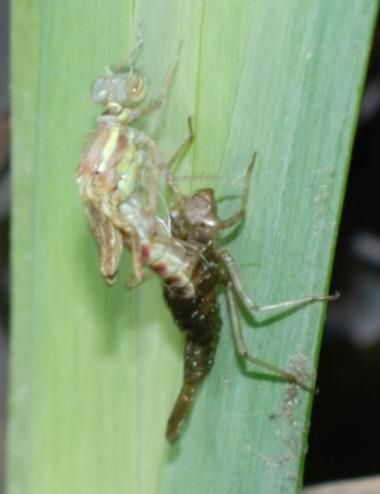

So, as can be seen in the middle photo above, we now have two things – the emerged adult and its vacated exuvia (the empty final larval skin). Don’t ignore the exuvia as this represents the best proof of successful breeding at any particular waterbody. Exuviae will stay attached to the leaf or other substrate for a while and can be collected and identified to species. For identification, it is probably best to use Steve Cham’s ‘Field Guide to the larvae and exuviae of British Dragonflies’, available from the British Dragonfly Society, https://british-dragonflies.org.uk. Below, on the left is another recently-emerged Large Red Damselfly with the empty exuvia below it and on the right a Common Darter dragonfly larva collected and in the process of being measured and photographed for identification.

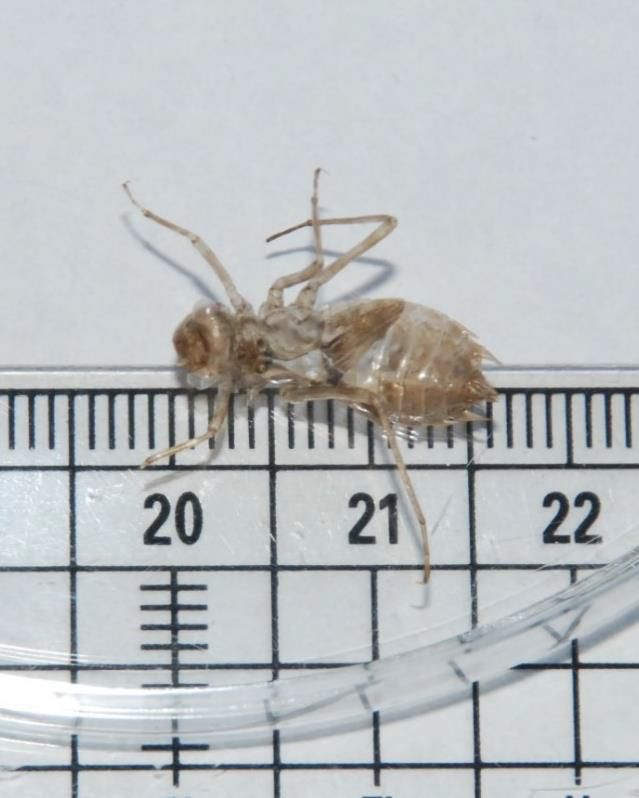
The Adults
So having dealt very briefly with the immature stages, it’s time to look at adult dragons and damsels. Let’s start by how to tell the two groups apart. Broadly speaking, damselflies are smaller and more delicate and (with one exception) hold their wings along their body at rest, whereas dragonflies are chunkier and rest with their wings held out at right angles to the body. The exception mentioned above is the Emerald Damselfly, which tends to rest with its wings partly spread at an angle to the body. Here are a Blue-tailed Damselfly on the left and a Common Darter dragonfly sunning itself on the right.
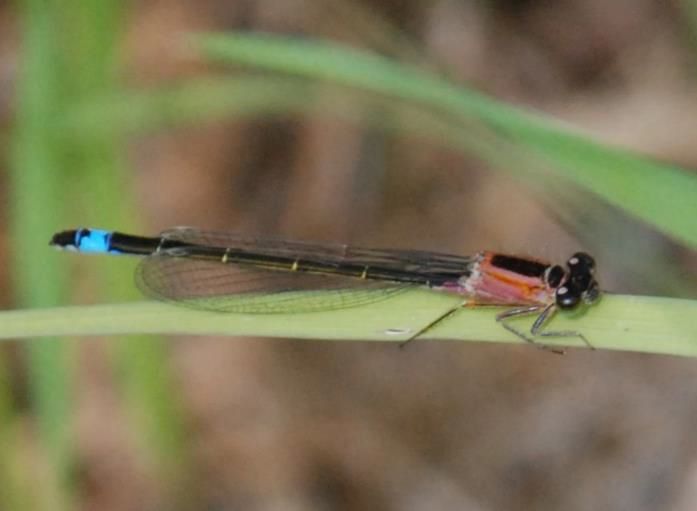
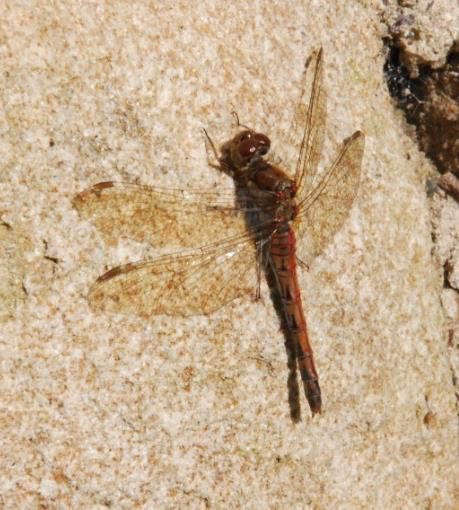
The identification of dragonflies and damselflies to species is generally fairly straightforward for males, though often with a need for some careful observation, but more complicated for females as they often have several colour forms. In the north of Scotland, the area for which these notes are primarily intended, distribution maps enable unlikely species to be eliminated from consideration but unfortunately this can be complicated by the progressive northward spread of more southerly species, a modern evolutionary effect that dragonflies share with many other forms of insect.
There are several good field guides for dragonflies and damselflies and also several sources of reliable reference photographs on the internet. Beware of simply ‘googling’ for images as it is not always clear where in the world the images were taken and the same common English name can sometimes be applied to different species in different countries. Reliable sets of reference images are available, for example, on the British Dragonfly Society (BDS) website, https://british-dragonflies.org.uk/odonata/species-and-identification/ and, although it’s primarily targeted at Leicestershire and Rutland, NatureSpot at https://www.naturespot.org.uk/gallery/dragonflies-damselflies. These resources cover species occurring in southern as well as northern parts of Britain but there is a more focussed downloadable leaflet on the ‘Damselflies and Dragonflies of the Highlands’ available from the Scottish area BDS website, https://british-dragonflies.org.uk/wp-content/uploads/2019/02/Dragonflies-and-Damselflies-pf-the-Highlands-2018.pdf. There is also a ‘British Dragonfly Society Scottish Group’ on Facebook.
Damselflies
Looking first at damselflies, we have the Large Red, the Blue-tailed, the Common Emerald and several Blues.
Large Red Damselfly males and most females are easily distinguished once they acquire their full colour. Small Red is not a potential confusion species this far north. Large Reds are the earliest damselflies to appear each year.
Blue-tailed Damselfly males and many females can be distinguished by the single blue section near the rear end of the abdomen. Males, as pictured below, have blue stripes on the thorax, the chunky bit of the body behind the head, though females can show various colours (as with the female with pink-brown sides to the thorax pictured earlier in these notes). As with the Small Red, the Scarce Blue-tailed Damselfly is not a potential confusion species in northern Scotland.
Common Emerald Damselfly males and females are green or bronze and frequently perch with half-spread wings, which again makes them fairly straightforward to identify. A rather bronze-coloured one with the often-characteristic half-spread wings is shown below. Once again, the Scarce Emerald is not a potential confusion species in northern Scotland.
Blues are more complicated and there are several similar species to be considered. The key feature for separating them is the marking on segment 2 of the abdomen, as indicated in the image below. Unfortunately, at rest this has a tendency to be obscured by the wings and sometimes persistence is needed in order to get a satisfactory photo. The most widespread blue damselfly species in Scotland is the Common Blue. The Azure, Northern and Variable Damselflies have more restricted ranges, though the BDS’s Northern Damselfly Survey has been finding that species slightly more widespread than previously recorded.
These markings on segment 2 are detailed in field guides but, essentially, the Common Blue has a club-shaped mark, the Northern a spear-shaped one, the Azure a U-shaped one and the Variable Y-shaped or U-shaped with a stalk. Note that these descriptions only apply to males; people starting with blue damselfly identification are advised to ignore the females and concentrate on the males, which would normally also be present.
There are other differences between the species that are described in the field guides, concerning the markings on the thorax and the remainder of the abdomen. For example, the blue damselfly imaged above has broad, bright blue lines on the thorax. This marks it out as a Common Blue Damselfly, despite the black marking on segment 2 looking like a triangle rather than a club, a discrepancy that puzzled the author when he was looking at several of these individuals at Drumbeg in West Sutherland. Warning: when identifying dragonflies and damselflies take account of as many features as you can see, not just the most obvious ones.
One other damselfly species that should be mentioned is the Beautiful Demoiselle, which appears to be spreading northwards up the west coast of Scotland from a historical population in Argyll. So if you are lucky enough to see a damselfly with coloured wings, look this one up in a field guide or in the on-line resources.
Dragonflies
Turning now from damselflies to dragonflies, only a brief overview is given here and the focus is on those species more likely to be encountered in northern parts of Scotland. More information and images are available in the leaflet on Highland dragonflies: https://british-dragonflies.org.uk/wp-content/uploads/2019/02/Dragonflies-and-Damselflies-pf-the-Highlands-2018.pdf. The same BDS website also provides a leaflet covering the dragonflies of Scotland: https://british-dragonflies.org.uk/wp-content/uploads/2019/02/Scottish-Dragonflies-Leaflet-2017-website-version.pdf.
If you are new to dragonflies, start with the easier ones and get familiar with them before moving on to the trickier ones. From that point of view, the North-West Highlands is a good place to start because there are fewer species to cause confusion than further south in Britain. As with the damselflies, males tend to be more brightly coloured than females and hence more straightforward to identify. That said, recently emerged (teneral) individuals are less well coloured, such as the Common Darter pictured on the left below. Fully adult male Common Darters are red and difficult to confuse with other dragonfly species likely to be encountered in the north-west highlands – at least until other similar species progress further northwards. An example of a fully-coloured Common Darter is pictured on the right below and there are also plenty of images available in the on-line resources.
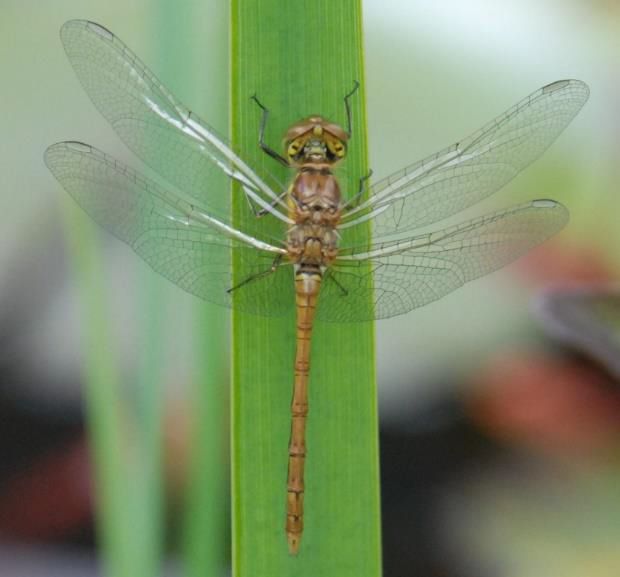
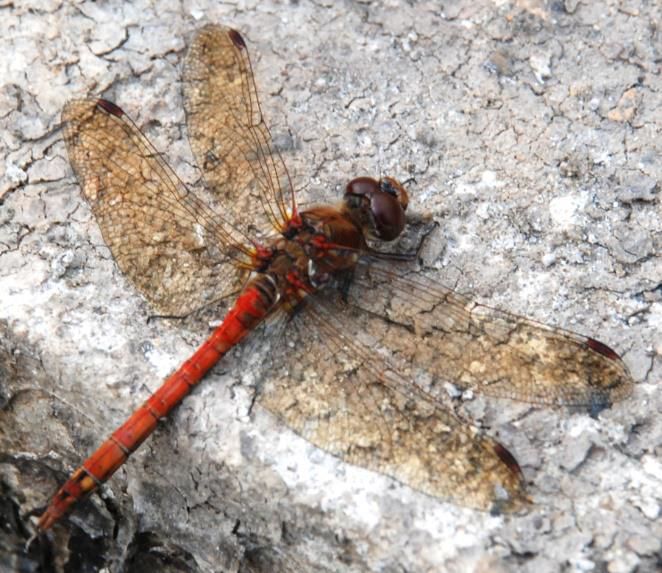
Having said that male Common Darters are unlikely to be confused with other species in the north-west highlands, mention must be made of the variation of colouration within the species and in particular of the dark form that used to be known as the ‘Highland Darter’.
This is now known from DNA evidence to be a local form of the Common Darter. It has black in amongst the red on the abdomen and tends not to be included in on-line reference material.
The other common (with a small ‘c’) Darter in the Highlands is the Black Darter, males of which species are – appropriately – black. Again, there are plenty of images available in the on-line resources. As with the Common Darter however, newly-emerged individuals have more yellow on them and can be confusing. Two views of a fully-mature male are shown below.
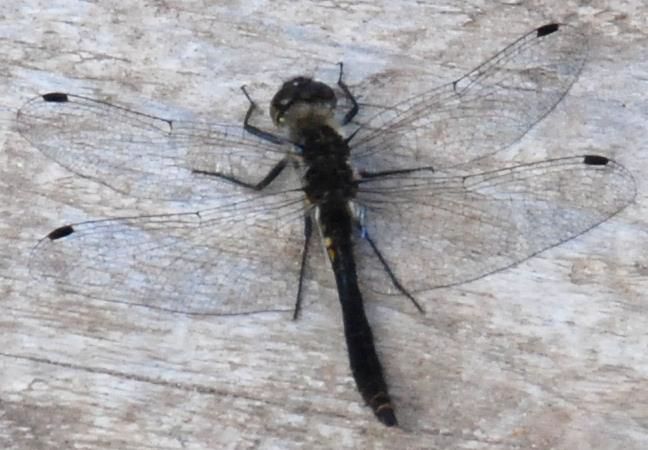
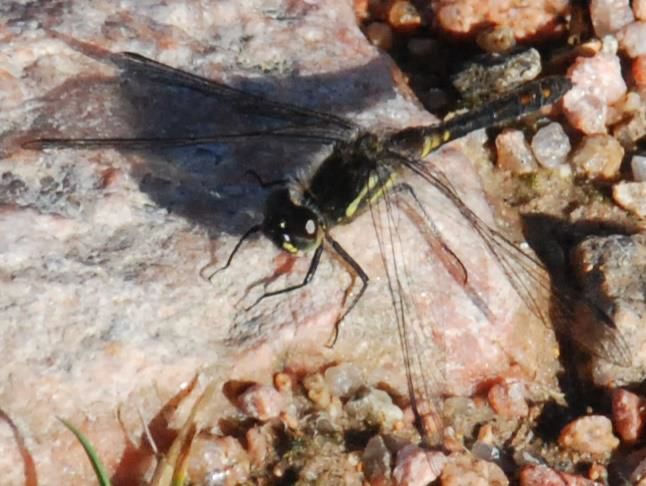
There is a third Darter species present in the North-West Highlands, the White-faced Darter. This is a scarce species with a scattered distribution across the Scottish Highlands as far north as Wester Ross. The black and red body of the male and black and yellow body of the female are easily distinguished from the other, more common darter species and the white on the face is also distinctive. It is pictured in the on-line resources listed earlier.
Mention must also be made of the Emerald Dragonflies (note: not to be confused with the Emerald Damselfly!). Although green or bronze-green in colouration, these can look almost black in a poor light or with a distant view. Fortunately – at least for the purposes of these present notes – the Downy Emerald and Brilliant Emerald have very localised populations in Scotland, none of them north of the Great Glen. The main stronghold of the more common species, the Northern Emerald, lies between the Forth-Clyde valley and Wester Ross but there are some recent records further north so it could be encountered in Sutherland and Caithness. Again, it is pictured in the on-line resources listed earlier.
Turning back to common and easily identifiable species, one where both the males and females are easily identifiable is the Golden-ringed Dragonfly, long-bodied and very obviously black and yellow. The distinctive pattern is shown in the image below. It can often be seen patrolling upland streams.
Equally identifiable, with a little more care, is the Four-spotted Chaser. The dark spots in the middle of the leading edge of each wing mark out this species, though its habit of constantly patrolling its territory and seeming to disappear as it settles against the camouflage of bordering vegetation can mean that persistence can be needed in order to get a good view.
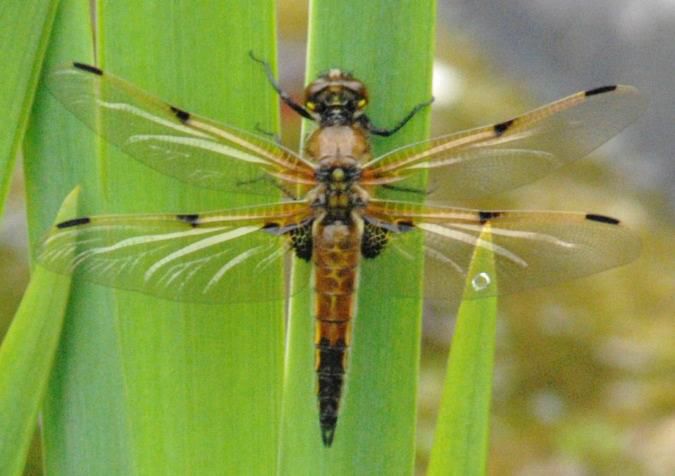
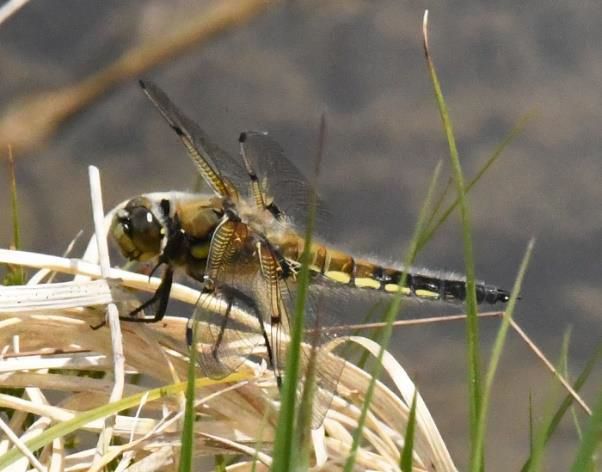
Although there are several other similar species in Britain, some of which are expanding northwards, only the Keeled Skimmer has a significant, and in its case fairly long-established, presence in the Highlands, as far north as Wester Ross. It has a similar shape and colouration and could be confused with either the darters or the Four-spotted Chaser but lacks the latter’s dark spots in the middle of the wings.
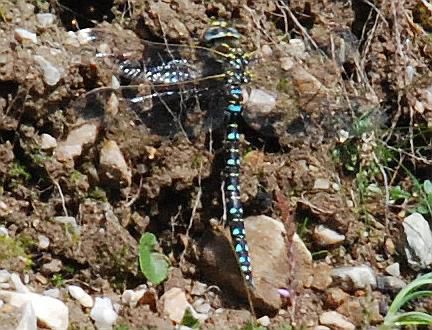
That leaves the three Hawker species, narrow-bodied dragonflies similar in shape to the Golden-ringed pictured above. The one most likely to be encountered in the North-Sutherland Wildlife Group area is the Common or Moorland Hawker. The following image shows a male, which has alternating blue and yellow markings along the abdomen, the blue ones being larger and more easily seen than the yellow ones. It also has yellow markings on the thorax. The abdominal markings on the female are usually yellow but can be green or blue.
Potential confusion species are the Southern Hawker and the Azure Hawker. The Southern Hawker is spreading in Scotland and could be encountered in North Sutherland, a possibility enhanced by its ability to colonise places like garden ponds, whereas the Common Hawker is more likely to be associated with water bodies in peaty moorland. The Southern Hawker is most easily distinguished from the Common Hawker by its broad green (or yellow-green) stripes on the thorax, noticeably different from the narrower yellow stripes of the Common Hawker. Images are available in the online reference materials given earlier.
The stronghold of the Azure Hawker is Wester Ross but its range does extend, at least intermittently, into Sutherland. Males are distinguished from Common Hawkers by their all-blue markings on the abdomen, though these fade to grey when the insect is cold. To gain heat, it can often be seen perching in sunshine on surfaces such as rocks and birch trunks. Care must be taken, however, in distinguishing Azure from blue-looking Common Hawkers and a good view (and ideally a photo) of the pattern on the abdomen is needed. Females usually have yellow markings and are harder to separate from Common.
Completing the Cycle of Life
Although the largest part of these notes relates to the adult stage of dragonflies, which is also the stage that most people observe, it has to be recognised that this is only the final relatively brief part of the insect’s life, the primary function of which is to mate and lay eggs. That said, the process is complicated by the need to find suitable habitat in which the next generation can thrive.
Normally the male will search for a good breeding territory and seek to hold it against other males. This, combined with their bright colourations, tends to make them fairly conspicuous – generally more so than the females. A likely downside is that as well as being more visible to us humans, the same applies to potential predators. The female will also be looking for good breeding habitat and seeking to select one with a good-looking male. The two will then pair up with the male holding the neck of the female. She will collect sperm by touching the end of her abdomen (where the eggs are) to the male’s sperm repository near the base of his abdomen. The following left-hand picture of a mating pair of Large Red Damselflies shows this happening. The male has perched on a leaf and is holding the neck of the female with the claspers on the end of his abdomen. The female has curved her abdomen upwards to collect sperm from the base of the male’s abdomen.
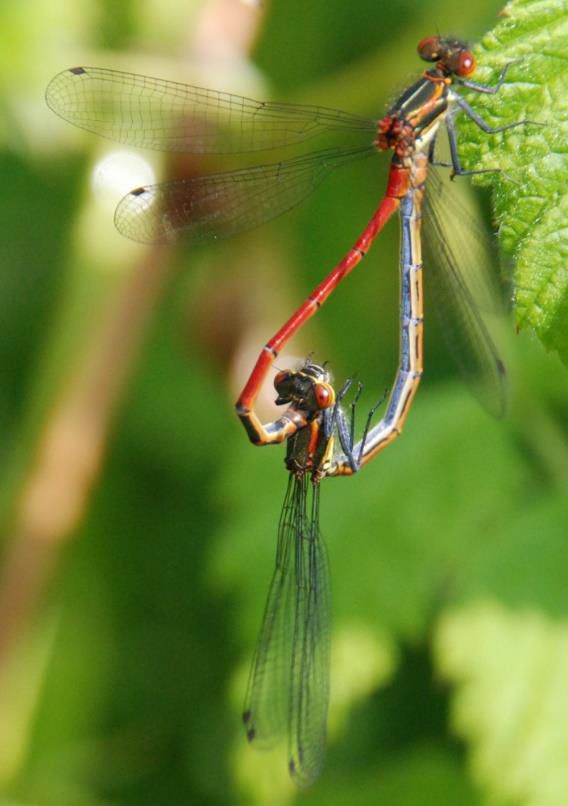
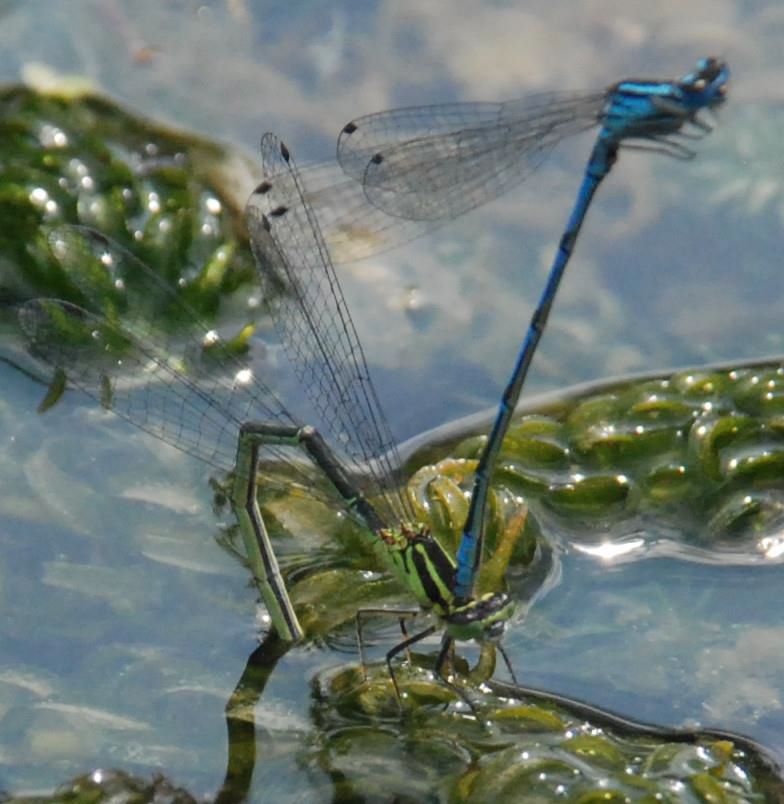
Eggs are typically either inserted into vegetation, often under the water surface, or are washed off the end of the abdomen by dipping it in the water, so that the eggs drop to the bottom of the water body. The former tends to be common in damselflies, the latter in dragonflies. The right-hand photo above shows a female damselfly, still grasped by the male, curving her abdomen downwards to lay eggs under the water.
When the eggs hatch, the larvae (or nymphs) are then – if all has gone well – in the right habitat for growing into the next generation.
Recording and Submitting Observations
For the North Sutherland area, there are two organisations that are interested in collecting dragonfly records.
One organisation is the Highland Biological Recording Group (HBRG), which collects records of all forms of life except birds and plants (for which the BTO and the BSBI have long-established databases). The HBRG website, https://www.hbrg.org.uk/MainPages/Records.html, gives guidance on the submission of records but for North Sutherland records can also be submitted through the North Sutherland Wildlife Group.
The other organisation is the British Dragonfly Society (BDS) for which the preferred route for submitting records is now iRecord, either as normal casual records or by using the British Dragonfly Society recording form accessed via the iRecord ‘Activities’ tab. The latter is preferred as it collects more information but normal casual records are also accepted. Ideally, one or more photographs in which key features are visible should be included with the record.
For any record, however submitted, the key elements of that record are: What? Where? When? How Many? Who?
What? can be a scientific name or a common English name.
Where? requires an OS grid reference (8-figure probably best) together with a locality name to enable any reviewer to double-check the grid reference. For the BDS activity form, information on the habitat is also desirable. When? is simply the date.
How Many? would be a count or rough estimate for the HBRG, combined with whether this relates to larvae, exuviae or adults. The BDS collects slightly more information in that it includes numbers of tandem (mating) pairs and of the number of females seen ovipositing (egg-laying). The BDS also uses a simple set of letter-codes for the numbers counted.
Who? records a) who made the observation and b), if different, who did the identification.
Note prepared by Don Matthews, 16 May 2022
All photos by the author

